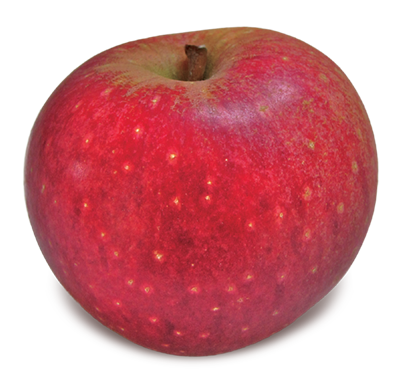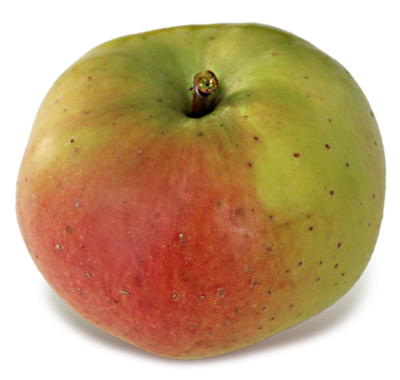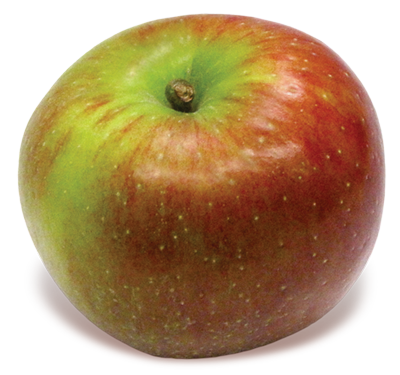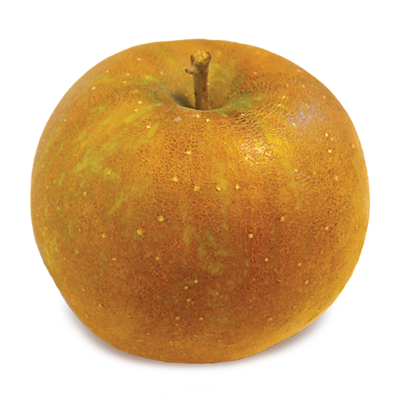From off my father’s tree!
Searching for apples in Emily Dickinson
Here is the text of a talk I gave at the Emily Dickinson Museum in Amherst, Massachusetts, April 24, 2016, to celebrate the reinstated Dickinson family orchard.
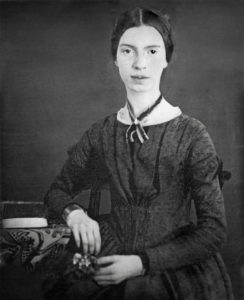
Before I begin, I would like to say a little something about nomenclature. A friend who reviewed the draft of today’s talk remarked how many people refer to Emily Dickinson by her first name. We wondered if it was a product of sexism.
It made me think of a scene in the movie Down By Law, in which Roberto Benigni plays an Italian immigrant. He tries to assimilate American culture but his English is poor, and his speech is full of malapropisms. His companions are especially amused when he refers to his favorite poet, “Bob Frost.”
Of course we would never refer to Frost as “Robert,” much less “Bob.” It would feel overly familiar, as if we knew him personally.
Perhaps there is something sexist about calling Emily Dickinson by her first name (although I cannot imagine doing the same with Sylvia Plath, say, or Adrienne Rich). But I think it also speaks to her small stature and openness. Shy as she was, her photograph does not seem unfriendly or unapproachable, in contrast with Frost, who appears irascible and curmudgeonly, especially in his later years.
I think this familiar address also has to do with the fact that Emily Dickinson’s presence is still among us, most tangibly in this museum. Referring to her by her first name might seem out of place in Minneapolis or Los Angeles, but here she remains familiar. If I occasionally call the poet by her first name, it is with no disrespect.
Put down the apple, Adam,
And come away with me,
So shalt thou have a pippin
From off my father’s tree!
I will return to this verse and look at other references to apples in Emily Dickinson’s poems, but first I will describe how apples were grown during her lifetime.
Then we will tour the recently reinstated Dickinson family orchard for additional background about how apples are grown, and how the new orchard compares to the original.
I will end by describing how apples were used during the poet’s lifetime, and we’ll be offering baked goods and refreshments that were likely served in the Dickinson kitchen.
America’s apple industry was undergoing a major transition during Emily Dickinson’s lifetime, from 1830 to 1886.
From Colonial days until the mid-1800s, hard cider, a slightly fizzy, lightly alcoholic drink, was America’s staple beverage, served year-round to young and old alike. An apple did not have to be good to eat to be valued in cider, since even the sourest apple is transformed when it is pressed into juice.
There may have been a small cider house on the Dickinson property, and it is likely that at least one tree in the orchard or a wild seedling along the property’s border produced apples that were only good for cider.
By the mid-1800s, though, hard cider’s dominance was fading, the target of temperance movements at either end of the century, and supplanted by an inexpensive urban alternative, beer. A national campaign against alcohol began in 1826 in Boston with the formation of the American Temperance Society. As a widely used drink that was abused by many, hard cider became a symbol of alcohol’s evils, and consumption fell.
By 1850 hard cider faced increased competition with beer. New England’s rural population was flocking to its cities and mill towns in search of work. They were living among new immigrant populations from countries like Germany, who brought with them a talent for brewing beer. Urbanization did not singlehandedly ruin the market for cider, but it played a big part. In 1874, the final blow came to the hard cider market in the form of a second temperance movement that began with the creation of the Woman’s Christian Temperance Union.
In rural Amherst, it is doubtful that the Dickinson household was affected by either trend. Yet the preponderance of true varieties — created through a process called grafting — in the family’s orchard points to the larger transition in America from wild to cultivated apples spurred by the shift from hard cider.
During Emily’s lifetime, apple growing gradually became more science-based and sophisticated. For most of the 1800s, apple trees did not generally receive specialized care, and they were only fertilized occasionally with barnyard manure. There were no severe insect and disease problems, and spraying was an unknown practice. It was expected that apples would have some blemishes.
It took until the 1860s for growers to associate disease to apples and trees with insects or bacteria. Prior to that, if trees failed or fruit was spoiled, it was assumed to be the result of inadequate soils, improper planting, or poor cultivation. In Two Voyages to New England, John Josselyn, referring to cherries, took a decidedly unscientific view of disease:
“Their fruit trees are subject to two diseases, the Meazels, which is when they are burned and scotched with the sun, and Lowziness, when the woodpeckers jab holes in their bark; the way to cure them when they are lowzie is to bore a hole in the main trunk with an augur, and pour in a quantity of Brandie or Rhum, and then stop it up with a pin made of the same tree.”
— from Apples of New England, p. 12
Yet New England’s farmers were better organized and took a more professional approach. The Massachusetts Horticultural Society was founded in 1829, a year before Emily Dickinson was born. Over the next decade, the Society introduced several apples to America, including three varieties from Russia: Alexander, Duchess of Oldenburg, and Red Astrachan, that still survive as heirlooms today.
Here in Amherst, the Massachusetts Agricultural College, now the University of Massachusetts, was founded in 1863 under the provisions of the Federal Morrill Land-Grant Colleges Act. Three years later, the college had yet to admit any students or complete any buildings. Finally, in the fall of 1867 — when Emily was 27 — the college admitted its first class of 50 students.
Despite these advances, storing apples remained a challenge to homeowners for most of the 1800s.
Most of New England’s apple crop had to be preserved or processed to make it last more than a few weeks after harvest. Out of season, until the late 1800s fresh apples were stored in various ways, with varying degrees of success: in piles in the orchard, buried in pits or covered by hay, put in bins in cellars or spread out on attic floors. Some of these methods lacked merit altogether, and the best were only marginally effective. Drying was a good way for a farm family to preserve a year-round supply of apples, and the dried fruit was especially good in pies. But the work of slicing apples into quarters and placing them on boards or hanging them from string to dry was tedious.
— from Apples of New England, p. 11
Another strategy to enjoy a year-round supply of apples was to extend the harvest season, and to plant varieties that were considered good keepers. The Dickinson orchard, like most home orchards of the time, reflected both approaches.
The family’s fresh apple season began with a variety called Early Harvest, one of the earliest of the summer apples. In some years it would have been ready for picking by late July. Early Harvest is yellow in color, with mild flavor that is more sweet than tart. The fruit is small and bruises easily, and it does not keep well. As one grower told me about early season apples in general, “they are great the day they are picked, and the next day they can be spread on toast.” Early Harvest dates back to at least 1800, and it is thought to have originated in central New York. It was considered best for the home orchard, but by 1900 it was seldom planted.
After Early Harvest came Golden Sweet, an old Connecticut variety dating back to the early 1800s. It was yellow, firm, and juicy, and mildly sweet. It was considered for home use only, and its season went from mid-August to early September.
The Dickinson orchard included two mid-season varieties, Westfield Seek-No-Further and Yellow Bellflower.
Westfield Seek-No-Further apple (Bar Lois Weeks photo)
Westfield Seek-No-Further is a round apple with dull cherry coloring over a yellow skin, with prominent lenticels and patches of russet. Its aromatic white flesh is crisp and moderately juicy, and its flavor more sweet than tart, with hints of pear. It is best as a fresh eating apple. The trees, while hardy, grow unpredictably from region to region.
The name Seek-No-Further was applied to several apples besides the Westfield Seek-No-Further, which is believed to date back to at least the Revolutionary War. It first spread from western Massachusetts south to Connecticut, and was cited in Ohio in 1796.
Westfield Seek-No-Further was popular in parts of the Northeast during much of the 19th century. An 1846 report by the New York State Agricultural Society called it “a truly excellent apple” originating in Westfield, “or its neighborhood, a beautiful meadow town, about ten miles west of Springfield, in the Connecticut Valley, in Massachusetts. For many miles up and down, and round about that river, it is the apple par excellence. … Whole orchards are planted of this fruit, and nowhere does it flourish in higher luxuriance and perfection.”
— from Apples of New England, p. 97
Yellow Bellflower apple (Bat Lois Weeks photo)
Yellow Bellflower is a medium to large, conical, lemon-yellow apple with a light red-orange blush. Its cream-colored flesh is crisp, juicy, and aromatic, and its tart flavor mellows in storage. It is best used in cider and for cooking, especially in pies. It bruises easily and does not store well.
One of the oldest heirloom apples from New Jersey, it was not much grown in New England until after 1850. Its name may come from the fact that it hangs like a bell from the tree.
— from Apples of New England, p. 137
The last two apples to ripen in the Dickinson orchard, late-season varieties Baldwin and Roxbury Russet, are once-popular Massachusetts native apples that still have followings today. How many of you are familiar with these two apples?
Baldwin apple (Bar Lois Weeks photo)
Baldwin is one of the best New England apples, and one of the oldest. It is large and conical, with crimson red over a coppery green skin. Its cream-white flesh is crisp and juicy. It is aromatic with a spicy, sweet-tart flavor, and it holds its shape when cooked. An outstanding apple for fresh eating, it is also good baked, especially in pies. It stores very well.
Although its parents are a mystery, Baldwin has a well-documented history. It was first named Woodpecker because the tree was popular with those birds. Its cultivation passed from John Ball, owner of the original orchard in Wilmington; to William Butters, who later purchased the land; and finally Colonel Loammi Baldwin, who gave the apple its permanent name.
— from Apples of New England, p. 66
Baldwin was the most popular apple in the Northeast for more than a century during and after Emily Dickinson’s lifetime, but the variety is susceptible to severe cold. In 1833, when Emily was 3, New England’s Baldwin crop suffered significant losses from cold, and again in the 1850s, when she was in her 20s. Their final demise came during the severe winter of 1933-34, when it is estimated that more than one million trees were lost.
Baldwins also tend to bear biennially, with good crops followed by small ones. A home orchard needed enough varieties to ensure adequate supplies during these off years, and as a hedge against loss from cold.
Roxbury Russet, America’s oldest apple, dates back to 1635. (Bar Lois Weeks photo)
Roxbury Russet is generally considered America’s oldest cultivated apple variety. It is medium, round, with coarse russeting covering chewy yellow skin, and sometimes-prominent white or yellow lenticels. Its yellow-green flesh is coarse, crisp and juicy. Its intense, sweet, spicy flavor is as good for fresh eating as it is for cider. Like most russets, it stores well.
— from Apples of New England, p. 144
Many apples have some russeting, especially around the stems. It results from frost, or cool or wet weather, and it is harmless to eat. Russet appears as a rough patch on an otherwise smooth skin, drizzled like a glaze over the apple’s top, or in intricate patterns. In the case of Roxbury Russet, it is a naturally occurring condition that covers the entire apple with a texture like fine sandpaper.
Until the advent of refrigeration around 1900, russeted apples were highly valued for their storage qualities and their excellence in cider. Eaten fresh or pressed into juice, they have rich, complex flavor, and they stay hard and crisp for months. But Roxbury Russets tend to grow small, making them less desirable for cooking, and many consumers reject their appearance in favor of red, yellow, or green apples.
Even so, Roxbury Russets, like Baldwins, are making a modest comeback today, especially for use in hard cider.
In addition to apples, the Dickinson orchard included several varieties of pear. They provided another source of sweetness, and some varieties stored nearly as well as apples. The two fruits complement each other in cooking, and several apples, notably Gala and the heirlooms Hudson’s Golden Gem and Westfield Seek-No-Further, are described as having pear-like flavor. Many pears are vulnerable to diseases like the fungal infection fire blight, though, which limits their commercial value in the Northeast.
Three pear varieties grown in the Dickinson orchard were Flemish Beauty, Seckel, and Winter Nellis. Of these three, only Seckel pears are commonly grown in the region or found in supermarkets today.
Flemish Beauty, a native of Belgium dating back to the early 1800s, arrived in Massachusetts in the 1830s, and it was once a leading commercial variety valued for its flavor, hardiness, and vigorous bearing habits. The fruit is harvested when it reaches full size in late September or early October, and ripens in storage. Wrote U. P. Hedrick in his 1921 classic, The Pears of New York, “Blight and scab condemn tree and fruit for commercial orchards, but a lover of good pears should combat these troubles for the sake of the choice fruits.”
Many of you may be familiar with Seckel pears. They are an American variety, from a wild seedling near Philadelphia in the early 1800s. It is known for its spicy sweet flavor, juiciness, and reddish brown color. Harvested in October, it is considered excellent for cooking, but it does not keep well. The fruit is also small. Wrote Hedrick, “If the fruits were larger, Seckel would challenge the world as a pear for the markets as it now does as a pear for the home orchard.”
Hedrick calls the heavily russeted Winter Nellis “one of the most delectable of all pears.” The fruit is medium to small and juicy, and like Flemish Beauty it reaches its full ripeness in storage, well after it has been picked. It is harvested late, and its eating season lasted from Christmas to March, or later. Winter Nellis originated in Belgium in the early 1800s, and while resistant to fire blight, Hedrick wrote that “No variety is more difficult to grow in the nursery.”
From antiquity to the present, no symbol is as potent and enduring as the apple, from the Golden Apple of ancient Greece to Adam and Eve, Sir Isaac Newton to William Tell, and in recent times Apple Records and Apple Computer.
During Emily Dickinson’s lifetime, the source of most American apple myths was a fellow Massachusetts native, John Chapman, better known by his nickname, Johnny Appleseed. Born in Leominster and raised in Longmeadow, Chapman died quietly in Ohio in 1845, when Emily was just 15. It is not likely that she would have heard of him until 1871, when Chapman’s story was told publicly for the first time in Harper’s Magazine, if she heard of him at all.
Chapman and another Massachusetts native, Henry David Thoreau, were the two great champions of America’s wild apple, Chapman through his plantings of apple orchards by seed in Ohio and Indiana, Thoreau in his essay, Wild Apples, published six months after his death, in 1862.
Chapman’s seed-grown apples accelerated the process of natural selection in the new frontier, as only the best seedlings survived in this foreign climate and territory. His apples were meant primarily for making cider. If they could be eaten or cooked, it was a bonus . But as hard cider gradually fell out of favor, the wild apples favored by Chapman and Thoreau were supplanted by reliable, grafted varieties that were good for eating.
. But as hard cider gradually fell out of favor, the wild apples favored by Chapman and Thoreau were supplanted by reliable, grafted varieties that were good for eating.
Among the many myths that have attached themselves to Chapman are ones that claim he had a favorite apple. In fact, he eschewed grafted varieties, believing that they were a violation of nature and God’s creation.
One of the most striking features of the surviving stories about Johnny Appleseed is that they seldom involve apples. The fruit typically serves as background, or a means of bestowing legitimacy on the teller, whether it is about Chapman’s survival skills, subsisting on butternuts one winter; his heroism, for an apocryphal, Paul Revere-like ride to warn settlers of marauding Indians during the War of 1812; his pacifism, calmly shaking out a hornet from his clothes while it was stinging him; his Christ-like wanderings, which were countered by descriptions of him as an unkempt, raving lunatic, and so on.
We are left with few clues about what motivated his devotion to the apple, other than a few records of business transactions and the bare fact of his 40 years of planting orchards.
While they grew up just miles away and a few decades apart, in most respects Chapman, the wild figure on the frontier, and shy, cultured Emily Dickinson, could not have been more unlike each other. But as his lifestyle and her poems reveal, they shared a deep reverence for nature. Like Chapman, we can infer from her poems that Emily loved apples, although there is scant direct evidence for it.
References to apples or orchards appear in just 12 of her poems and in one of her letters. In most of these, the fruit or trees serve as background — like apples in the myths surrounding John Chapman. Four of the apple poems contain images of birds in trees, including a tribute to the oriole, which she calls a “pleader, a dissembler/An epicure, a thief,” and — my favorite — “the Jesuit of orchards.”
Like the birds she writes about, Emily hovers about the orchard, but seldom settles in it. She writes frequently about the apple’s main pollinators, bees and butterflies, but her attention is on the ground in her gardens, not up in the trees. Perhaps this is because of her small physical stature and gender, since women were not generally involved in caring for or picking apples on 30-foot ladders. The orchard provides her with movement and sound, instead, the flutter and singing of “the giddy bird” and the wind that blows “the wide way in the Orchard,” as she wrote in a letter.
The apple has symbolic meaning in two short poems that evoke Eve in the Garden of Eden:
Forbidden fruit a flavor has
That lawful orchards mocks;
How luscious lies the pea within
The pod that Duty locks!
and
Heaven is what I cannot reach!
The apple on the tree,
Provided it do hopeless hang,
That “heaven” is, to me.
The apple tempts the poet as it tempted Eve, something desirable but just beyond reach, of law and order in the first poem, and heaven in the second.
Conversely, apple and orchard provide images of the beauty of the material world in several instances, with “red apples wedged /The stubble’s join between,” in a poem in which Emily speculates on her death. The orchard “sparkles” in another poem, and while it refers primarily to raindrops, the image of orchard “spangles” conjures associations of the orchard through the seasons, from spring bloom to fall harvest, or simply water dripping from summer’s leaves.
/The stubble’s join between,” in a poem in which Emily speculates on her death. The orchard “sparkles” in another poem, and while it refers primarily to raindrops, the image of orchard “spangles” conjures associations of the orchard through the seasons, from spring bloom to fall harvest, or simply water dripping from summer’s leaves.
There are no references to apples as food. That is not unusual, since Emily seldom wrote about domestic life. But we do find evidence in one of her poems about the Dickinson’s method for storing apples:
Like brooms of steel
The Snow and Wind
Had swept the Winter Street,
The House was hooked,
The Sun sent out
Faint Deputies of heat—
Where rode the Bird
The Silence tied
His ample, plodding Steed,
The apple in the cellar snug
Was all the one that played.
My favorite verse about apples provides the strongest hint about Emily’s attitude toward the orchard:
Some keep the Sabbath going to church;
I keep it staying at home,
With a bobolink for a chorister,
And an orchard for a dome.
The space beneath the tall trees is like a cathedral, the dome the roof of heaven.
The four lines I read at the beginning come from a poem titled, “Sic transit gloria mundi,” Latin for “Thus passes the glory of the world.”
The poem is an ode to the virtues of living in the natural world, and it contains stanzas about two of our most cherished apple stories, Sir Isaac Newton’s discovery of gravity in the late 1600s, and the Biblical story of Adam and Eve.
Historians doubt that Newtown was struck in the head by an apple while sitting beneath its tree, as the popular story goes; it may be that he did not even observe an apple falling to make his historic deduction. But Emily repeats the popular legend in her poem about the wonders of life in the material, corporeal world:
During my education
It was announced to me
That gravitation, stumbling
Fell from an apple tree!
The verse with Adam is a bit bolder:
Put down the apple, Adam,
And come away with me,
So shalt thou have a pippin
From off my father’s tree!
In this stanza, Emily urges Adam away from the Garden, tempting him, like Eve, to forego God’s ideal Eden with its forbidden apple tree for a mortal life among her temporal father’s orchard. The meaning of life, she suggests, can be found in the senses, through our physical experience.
On that note, let’s visit the orchard.
These small, semi-dwarf trees, some of which were planted earlier this week, should take just a couple of years to begin bearing fruit. Dwarf and semi-dwarf trees grow about 12 to 15 feet high, or about half as tall as the standards in the original Dickinson orchard, and because of this they can be planted closer together (as little as 18 inches between trees in some orchards). The smaller trees are easier to care for and the apples are easier to pick. Standard-sized trees typically take between five and eight years to produce fruit, depending on the variety, and they require more space and tall wooden ladders to harvest fruit at the top of the tree.
For most of New England’s history, apple trees have been afforded plenty of space to grow. John Jacob Thomas in 1839 wrote that ‘where the quantity of ground is limited, and in rare cases, trees may for a time stand within fifteen or twenty feet; but for large and permanent orchards they should not be nearer than thirty feet.’ For the first half of the 20th century, most commercial orchards planted trees even more widely apart, on 40-foot by 40-foot grids.”
— from Apples of New England, p. 25
The trees are just beginning to emerge from dormancy, and will blossom in early May. In New England, spring bloom typically peaks around Mother’s Day. This year the trees are a little ahead of schedule due to our recent warm weather. Once the blossoms have emerged, they are vulnerable to a deep frost — below 28 degrees — that can destroy all or part of an apple crop before the apples form. The danger of frost usually lasts to Memorial Day.
For those unfamiliar, pollen is essential to forming the fruit, and two apple varieties are needed to ensure pollination, as apples have a genetic defense to keep from becoming inbred. When pollen comes from a closely related variety, the blossom’s pollen tube ceases to grow, preventing fertilization.
Apple trees are propagated in two ways: sexually, from seeds fertilized by two parents, and vegetatively. The thousands of years-old practice of grafting is necessary to replicate desired varieties, as seed-grown trees, like the ones planted by John Chapman, rarely resemble their parent tree. Growers use scion wood, or cuttings, from existing trees and graft them onto a rootstock — the root system and short stem from another apple or crabapple tree — chosen for hardiness, disease-resistance, size, or other beneficial qualities.
For all their cultural meanings and fascinating horticultural traits, we value apples primarily because they are delicious and healthy to eat, and no food is more versatile. Apples were valued during Emily’s lifetime as an inexpensive source of sweetness that could be enjoyed year-round in one form or another. They could be pressed into fresh cider, fermented into hard cider, or distilled into vinegar or brandy. Apples could be eaten fresh, cooked, baked, dried, or made into apple butter.
For refreshments today we have examples of apple baked goods that were popular in Emily’s time: Gingerbread with applesauce, by Bar Lois Weeks, executive director of the New England Apple Association, plus three traditional apple desserts: Apple Brown Betty by Jan Ruby Crystal, Apple Pear Cobbler by Kathy and Greta Kurtz, and my Apple Pandowdy. Here is a description of the differences between the three:
A trio of apple desserts share simple crusts and colorful names: Apple Brown Betty, Apple Cobbler, and Apple Pandowdy. All were favorites in early New England for their economy and ease of preparation, and, of course, their rich apple flavor.
Apple Cobbler has a thick, biscuit-like crust over a deep-dish filling. In some versions, the crust encloses the filling like a pie, in others the batter is dropped in spoonfuls on the top. While popular in New England, cobblers may have originated in Europe, deriving their name from their uneven crust resembling cobblestone streets.
Apple Brown Betty is a pudding-like dish featuring apples baked between layers of buttered breadcrumbs. Apple Brown Betty also has European roots, originating in England and closely related to the French Apple Charlotte. This was a popular dish during Colonial times, although the name Apple Brown Betty only dates back to the mid-19th century (no one knows who ‘Betty’ was, incidentally).
Pandowdy is really a deep-dish apple pie, with a thick apple filling and no bottom crust, but it is distinguished by its choice of sweetener — molasses, rather than sugar — and subtle blend of spices. Pandowdy differs from cobbler in that you push down its biscuit-like topping into the fruit as it bakes, allowing the apple juices to bubble up through.
The origin of the word ‘pandowdy’ is unknown, but it dates back to the early 1800s, according to Merriam-Webster. Some speculate that the name refers to the dish’s humble, plain origins (‘pan’ plus ‘dowdy’). It is true that it does not take long to make, especially if you keep your apple peels on, as I do. But that is good, since apple pandowdy does not last long, either.”
— from Apples of New England, p. 100

